Slovenia is a small country in Central Europe nestled between Italy, Austria, Croatia and Hungary. It’s a land of snowy white peaks, green valleys, and turquoise rivers. The country is beautiful in all seasons, but it is perhaps at its most magical around Christmastime.
 Like children in other parts of the world, Slovenian kids are visited by Santa Claus every Christmas Eve (he’s called Božiček), but he isn’t the only magical holiday man in the land. Kids in Slovenia don’t have to settle for just one santa. They also have a more traditional option available. A catholic saint called Miklavž who dishes out the gifts on the night of December 5th. If that weren’t enough, there’s also a uniquely Slovenian Santa who comes down from the country’s highest mountain every New Year’s Day to shower the children of Slovenia with good wishes and even more presents. He is called Dedek Mraz.
Like children in other parts of the world, Slovenian kids are visited by Santa Claus every Christmas Eve (he’s called Božiček), but he isn’t the only magical holiday man in the land. Kids in Slovenia don’t have to settle for just one santa. They also have a more traditional option available. A catholic saint called Miklavž who dishes out the gifts on the night of December 5th. If that weren’t enough, there’s also a uniquely Slovenian Santa who comes down from the country’s highest mountain every New Year’s Day to shower the children of Slovenia with good wishes and even more presents. He is called Dedek Mraz.
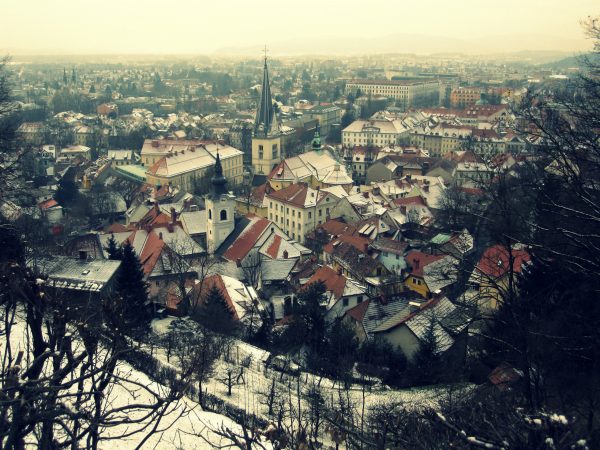
This nation of just over 2 million people is visited by, not one, not two, but three different “santas” every festive season. But it hasn’t always been this way. Each santa has had his moment in the spotlight—each in a different period of Slovenia’s complicated history. And in order to have a Christmas season that reflects that history and speaks to all Slovenians, you need three magical men.
Sveti Miklavz
The people of Slovenia have long been protective of their customs and language, and it’s easy to understand why: for hundreds of years they were ruled by the Hapsburg Empire, one of the most powerful dynasties in Europe. Within this empire, the Slovenes were a distinct group of people with their own language. But they did share the same religion with almost all other subjects of the Hapsburgs: Roman Catholicism. Roman Catholics loved their saints, and around Christmas-time, there was only one saint that mattered.
Saint Nicholas, (or Sveti Miklavž in Slovene), was a bishop born in the third century CE. There are a lot of stories that surround Saint Nicholas, including one about a poor old man who got so desperate he was about to sell his daughters into prostitution. St. Nicholas intervened by delivering bags of gold coins to the man’s house in the middle of the night. His saint day on December 6th was when Slovenian children traditionally received presents while they were sleeping, just like those bags of gold one and a half millennia ago.

But the action really happened the night before during Miklavževanje (Saint Nicholas Eve). In the capital city of Ljubljana, there was a church sponsored parade with Miklavž at the center, dressed like a Catholic bishop with that iconic pointed hat, golden slippers, and a curling bishops’ staff. Saint Nicholas in the Slovenian tradition is kindly, but he’s accompanied by a group of little demons called parkeljni. Their role is essentially as a tool to be used by parents to frighten children into being obedient, and they carry around chains to help do their job.
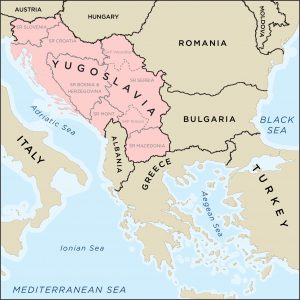 But Miklavž came under threat when the Austro-Hungarian empire crumbled after World War I and the Slovene people decided to join a collection of six nations called Yugoslavia. After World War II Yugoslavia became a communist country led by a charismatic strongman named Josip Broz, better known as Tito. Under Tito, Catholicism was suppressed. And Saint Nicholas aka Miklavž was banned.
But Miklavž came under threat when the Austro-Hungarian empire crumbled after World War I and the Slovene people decided to join a collection of six nations called Yugoslavia. After World War II Yugoslavia became a communist country led by a charismatic strongman named Josip Broz, better known as Tito. Under Tito, Catholicism was suppressed. And Saint Nicholas aka Miklavž was banned.
Dedek Mraz
The new Yugoslav communist authorities wanted to do away with religious customs and replace them with Socialist holidays. Banning dressing up as a Catholic saint was one thing, but taking away presents for children during the darkest month of the year would have been unforgivable. Tito knew that. And so he needed something, or rather someone, to take Miklavž’s place.
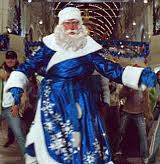
At this point, Yugoslavia relied on the Soviet Union for economic assistance, so Tito decided to borrow from its culture, too. Since the 1930s, the Soviet Union had deployed a Communist Santa to hand out the gifts. That figure was called Ded Moroz in Russian, or Grandfather Frost. In Slovenia he was called Dedek Mraz.
Dedek Mraz looked like an enormous bearded man from the Russian countryside. He would appear in factories where visiting children could come and and meet him. But a political crisis threatened to end Dedek Mraz before he had even had a chance to spread the holiday cheer. Josef Stalin wanted Yugoslavia to become a puppet state for the Soviet Union, but Tito wanted his nation to be fully independent.
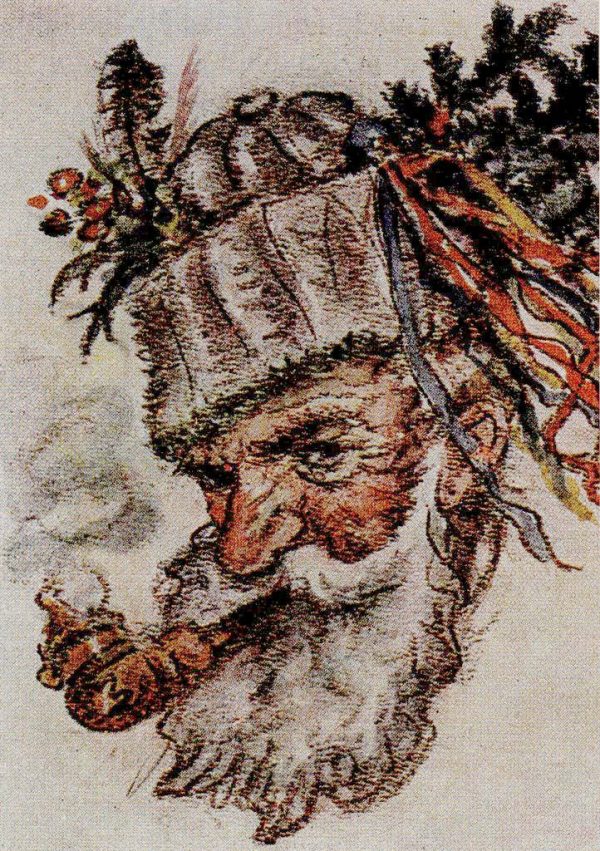
Tito eventually outlawed all Soviet influence in Yugoslavia, but he wanted to keep Dedek Mraz — just not dressed like a Russian. Various new outfits were tried. Dedek Mraz appeared as a soldier, a miner or a sailor — basically Socialist archetypes of Yugoslav proletarian heroes — but neither the original recipe Russian Dedek Mraz, or the Yugoslavian cosplay version really caught on in Slovenia.
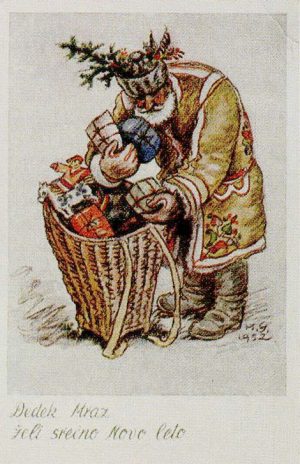
The people just didn’t buy it. It felt phony. And so Tito decided to allow each of the six Yugoslav nations, including Slovenia, to design their own, bespoke version of Grandpa Frost. And Slovenia, this country that had long been a part of a bigger empire, took the opportunity to redesign Dedek Mraz, and turn him into something distinctly Slovenian.
A sixty-nine year old painter called Maksim Gaspari was brought in to handle the design. Gaspari was a classically trained artist, but he was first and foremost a commercial illustrator with a broad fanbase. A Slovenian Norman Rockwell if you will. And when it came to Christmas, Gaspari knew what would appeal to as many Slovenes as possible.

In 1952 Gaspari created 3 postcards of his new, updated, Slovenian version of Dedek Mraz. He was smoking an old fashioned decorated pipe that was associated with this one small town in the mountains. He had a long sheepskin coat with these ancient Slovenian flower motifs on the coattails. He was a trapper with a hat made out of dormouse fur. He was not wealthy, but what wealth he had he shared by bringing gifts to children.
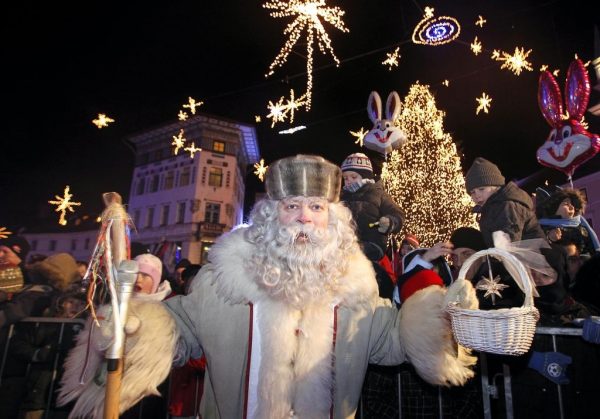
Slovenian fairy tales are full of modest and humble heroes, who rise to the challenge when needed — mountain men ready to answer the call. So Gaspari made sure that his Dedek Mraz spoke directly to the character of the people. A voluntary organisation called the Association of Friends of Youth was in charge of the Dedek Mraz rollout. They made ten identical costumes from Gaspari’s designs, and in 1952 the new Dedek Mraz made appearances in and around the capital.
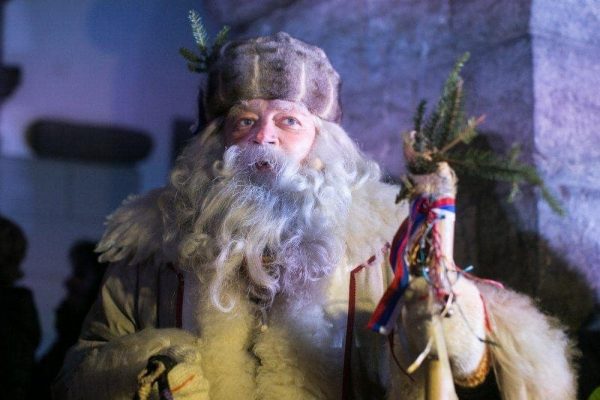
This was followed by a booklet called ‘Dedek Mraz prihaja’ – ‘Dedek Mraz is Coming’ in 1957. The booklet had one main instruction. Dedek Mraz was a fairytale figure designed only for kids. He wasn’t a piece of state propaganda the way Stalin or Tito had treated him. He was fun! Translated into English the booklet said: “Dedek Mraz is not a didactic figure, but a lively, cheerful, witty, fairy-tale figure that sinks into the child’s world so that the child comes to life with it. ”
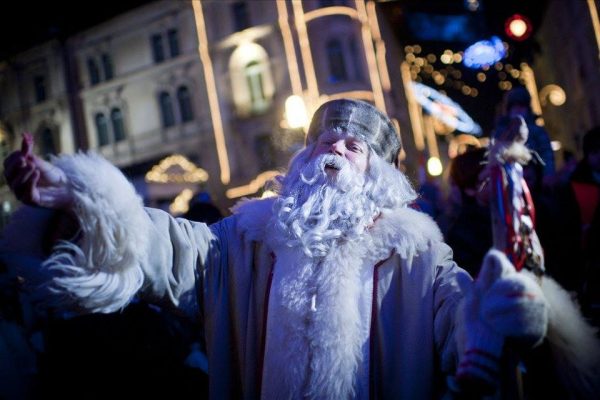
In 1987, an actor named Robert Waltl started playing Dedek Mraz at the main parade in Ljubljana in 1987. At this point, Tito had been dead for seven years and Yugoslavia was on a downward spiral toward complete disintegration. But Slovenia was actually doing well economically, and felt that the other republics were dragging her down.
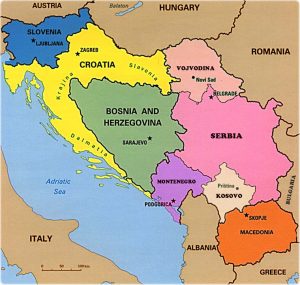 So in 1991, Slovenians took their chances and declared independence from Yugoslavia. Even though a short, ten-day war followed, Slovenia managed to escape the tragedies that rocked other former Yugoslav countries like Bosnia. After centuries of being part of monarchies, empires and failed six-part nation states, Slovenia had achieved independence. Still, this victory led to a battle over Slovenian culture, one that almost spelled the end for Dedek Mraz. Many Slovenes saw this moment as an opportunity to move into the modern world and reject everything from the past. And despite his fun Slovenian rebrand, some people still associated Dedek Mraz with the Soviet Union. A new Santa was needed.
So in 1991, Slovenians took their chances and declared independence from Yugoslavia. Even though a short, ten-day war followed, Slovenia managed to escape the tragedies that rocked other former Yugoslav countries like Bosnia. After centuries of being part of monarchies, empires and failed six-part nation states, Slovenia had achieved independence. Still, this victory led to a battle over Slovenian culture, one that almost spelled the end for Dedek Mraz. Many Slovenes saw this moment as an opportunity to move into the modern world and reject everything from the past. And despite his fun Slovenian rebrand, some people still associated Dedek Mraz with the Soviet Union. A new Santa was needed.
Božicek and the Santa Trifecta
Suddenly, Slovenia was a democratic and capitalist friendly country looking outward to the US and Western Europe for inspiration. Many Slovenians embraced the capitalist world’s festive figure, Santa Claus. But this time, the new santa didn’t push the old one off the stage. In the end, Dedek Mraz survived the transition from socialist Yugoslavia to democratic Slovenia, perhaps because he was so well-designed for Slovenian culture.
Dedek Mraz and Santa Claus were side by side, sharing the Christmas spotlight. And that would have been enough for most counties. But there was a sleeping giant in this story — Slovenia’s first “santa” who had never really gone away: Sveti Miklavž, the original catholic St. Nick. While the government had banned public religious celebrations in the Yugoslav era, Catholic families still held festivities in private. And with independence, Saint Nicholas went public again.

Robert Waltl, Ljubljana’s go-to Dedek Mraz, actually played a key role in Miklavž’ return. He believed that if Slovenia was to move on it had to reconcile its past as a faithful Catholic nation. So in 1991, Robert, organized a parade for Miklavž. It was the first one since WWII —the saint’s grand return to public life. Never shying away from a challenge, Robert decided to play the central role of Miklavž himself. He even asked a bishop if he could borrow some church clothing to make his costume more authentic.
 And ever since that moment, when Milkavž returned to the streets of Ljubljana, Slovenia has had all three santas at Christmastime. Slovenes have not only completely accepted all the ‘Three Good Men’ (tri dobri možje) they’ve been packaged together in a month of non-stop festivities called ‘Merry (or: veseli) December.’ Each Santa gets a specific time slot to perform their own brand of Christmas magic.
And ever since that moment, when Milkavž returned to the streets of Ljubljana, Slovenia has had all three santas at Christmastime. Slovenes have not only completely accepted all the ‘Three Good Men’ (tri dobri možje) they’ve been packaged together in a month of non-stop festivities called ‘Merry (or: veseli) December.’ Each Santa gets a specific time slot to perform their own brand of Christmas magic.
First on the calendar is Miklavž. He appears at churches across the country and parades in the big cities on the evening of December 5th. Then comes Santa Claus or Božicek. Christmas Eve is obviously his allotted night, but he tends to hang around the shops and malls. And, finally, there’s Dedek Mraz, who actually makes appearances at kindergartens and schools throughout December. After Christmas, he’s the only Santa left on the scene. His parade happens at the New Year.
Slovenia has survived empires and a socialist autocracy to emerge as a proud independent state, but instead of repressing the past, it has embraced the santas that have helped define it, coordinating a festive season that has a time and a place for all three.



Comments (13)
Share
Hi there and thanks for making one of the world’s best podcasts. I just wanted to say that maybe you could check out the Icelandic Santa clauses for next Christmas. They are 13. Could be interesting.
Anyway, Merry Christmas
Fascinating stuff! Thank you for sharing. Merry Christmas!
The only reason Slowenia had only 10 days war lies in fact that Yugoslav army used Slovenia outposts to attack Croatia with both sides
Apart from that, really good article!
I love hearing about different holiday traditions surrounding a character we take for granted in the US.
You should look into the Yule Lads of Iceland – 13 pesky troublemakers that come into town the 13 days prior to Christmas, each with his own annoying habit like stealing meat, licking pots, or sniffing doorways. Their parents are two trolls, known to kidnap and eat naughty children.
There were once many more Yule Lads — or at least, they had many different names — depending on the region; those are now lost to history, the 13 well-know Lads having been popularized by a poem by Jóhannes úr Kötlum in 1932.
Also, there is a giant cat, called the Yule Cat, known to eat children who did not receive a new article of clothing for Christmas.
Loved the story, growing up in Germany where kids are visited by two Santas myself.
On Dec 6, by Nikolaus, bishop of Myra, with a sack full of presents and accompanied by either “Knecht Ruprecht”, “Pulterklas” or “Rupsack”, depending on the region who punishes/ scares naughty kids.
And then on Christmas Eve by the “Christkind”, “the Christ Child”, an angel like kid, apparently invented by Martin Luther to replace the catholic “Nikolaus”
I’ve been living a stone’s throw (OK, maybe a “long toss”) away from Slovenia in Croatia for the past three Christmases. I visited Ljubljana at Christmastime in 2019 and it was just as picturesque and cheery as Will described it. The Alpine snows make it look like what we a lot of Americans picture when you say “traditional” Christmas.
In our house Sveti Nikola (Saint Nicholas) reigns supreme but that could be because my American-Croatian son is named Nikola and gets all kinds of special attention on his “name day” (a pretty big deal here for any kid with a saint’s name), Dec. 6.
I’m from Slovenia and my family was never very religious, so Dedek Mraz was always ‘the good guy’ in our family even after 1991.
However, a few years ago my son was born on January 1st, so to gain some time between gift days, St. Nicholas has now pragmatically become the official ‘good guy’ around here :)
Stories from my home about 3 good men, as we call them, told by the one and only Roman Mars is just too good!
As an avid 99pi listener since the beginning of the show this is just amazing to me!
Hearing Will’s children react negatively to Miklavž’s demons reminded me of a story my parents loved to tell about me when I was growing up in Toronto. We used to go downtown for the annual Santa Claus parade. Toronto had a large contingent of Scottish immigrants when a lot of its power structures were formed, and one legacy of that was that there would be a large number of bagpipe marching bands. Apparently on my first trip to the Santa Claus parade, our family was coming up out of the subway when one of the bands struck up a practice tune before the parade. It apparently scared the living crap out of me to the point where my parents had to turn us around, go back into the subway, and head back home.
Very interesting story, but I agree with Guðrún. Iceland has 13 santas and a population of ~350k, so Roman’s declaration of santa density is way off the mark!
Admittedly the Yule Lads started life as trolls and menaces, but these days they wear the red hats and suits, and bring 13 nights of presents for well behaved children, so I think it’s more than fair to include them in the santa category.
A wonderful podcast! Enjoyment and learning. Thank you.
With such a robust Christmas culture, I fo find myself curious that Melania Knauss Trump despises Christmas so much? Is it her experience or family? Anyway, warmest good wishes to all for The Holidays.
I am slovene, living in Spain and I am listening to 99pi for years. This podcast was sureal and the biggest gift to me this year. Thank you so much!
We kind of have three Santas here in Franconia, Germany as well. Nikolaus on the 6th of December, traditionally the Christkind (represented by a young woman) for the 24th and the Weihnachtsmann (Santa Clause) that’s just everywhere recently because apparently it’s easier for Capitalism to produce stuff they can sell around the world.